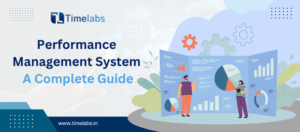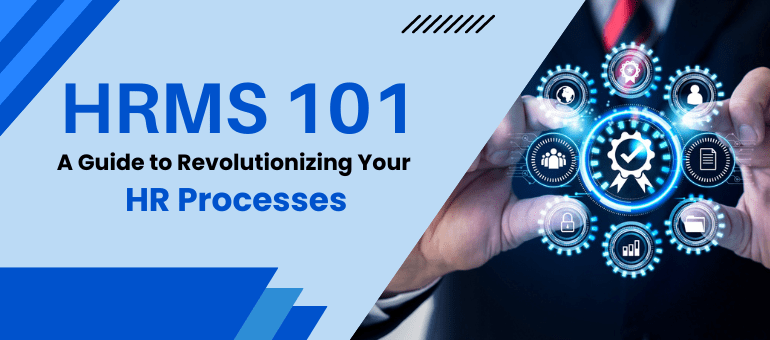The HR-tech industry is constantly changing, with new tech and new trends popping up every day. If you are looking to add new tech possibilities to your business then it is crucial to stay updated with the new HR trends. As per a study conducted by Verified Market Research, India’s HR-Tech market is projected to reach US$ 38 billion in 2030 from US$ 23 billion in 2021. From streamlining recruitment processes to automating employee onboarding to better managing employee performance, HR tech has a growing involvement and impact in every part of the domain. In this article, we’ll be looking at some of the biggest trends in HR tech for 2023 and how they can help you make your organization more efficient.
1. Workflow automation in modern HR management systems
Workflow automation is one of the most important aspects of modern HR management systems. By automating various workflows with cloud hr software, HR professionals can save a lot of time and effort that would otherwise be spent on manual tasks. Many different types of workflow automation can be used in HR management systems. Some of the most popular ones include applicant tracking, onboarding, performance review, and benefits administration. Each of these workflows can be further customized to meet the specific needs of an organization. Applicant tracking refers to the process of tracking and managing job applicants through an automated system. This includes everything from collecting applications to scheduling interviews and performing background checks. Onboarding is the process of getting new employees acclimated to their new roles within an organization. This usually includes creating employee profiles, assigning tasks, and providing training materials. Performance review is the process of assessing an employee’s performance over time. This usually includes setting goals, measuring progress, and providing feedback. Benefits administration is the process of managing employee benefits programs through an automated system. This includes everything from enrolling employees in programs to calculating premiums and processing claims. The growing prevalence of data-driven decision-making has led to an increased demand for automation and enhanced analytics within the HR sphere. This trend is being driven by the need to improve organizational efficiency and effectiveness, as well as to gain a greater understanding of the workforce. Organizations are beginning to utilize automation in a variety of HR functions, such as applicant tracking, onboarding, and performance management. Automation can help to streamline processes and reduce the amount of time spent on manual tasks. Additionally, it can help to improve accuracy and consistency in data collection and analysis. Enhanced analytics capabilities are also becoming increasingly important in HR. The ability to access and analyze large data sets can help organizations to identify patterns and trends, make better predictions, and take informed actions. Additionally, advanced analytics can be used to support decision-making around things like talent acquisition and retention, as well as succession planning.2. Making systems intelligent with Analytics and AI
Analytics and artificial intelligence (AI) are two of the most transformative technologies of our time. By harnessing the power of data, they have the potential to revolutionize how we live, work, and interact with the world around us. Companies are increasingly turning to predictive analytics to identify which employees are at risk of leaving their jobs and take steps to prevent it from happening. This year, we’ll see more companies adopting predictive analytics tools and using them to inform their retention strategies. The future of work is shrouded in uncertainty. But one thing is for certain: the rise of artificial intelligence (AI) is reshaping the workplace as we know it. AI is already starting to impact a wide range of industries, from retail to healthcare. And its impact on the world of work is only going to grow in the years to come. Several factors are driving this change. First, AI is becoming more sophisticated and affordable. As AI technology gets better, businesses are finding more and more ways to use it. Second, the COVID-19 pandemic has accelerated the adoption of AI in the workplace. With so many people working remotely, businesses are turning to AI to help with tasks like data entry and customer service. Third, there’s a growing recognition that AI can help businesses improve their bottom line. A recent study by experts found that companies that are using AI are seeing significant financial gains. So what does all this mean for the future of work? As AI becomes more commonplace in the workplace, we’re going to see a shift from human workers to digital workers. This doesn’t mean that humans will be replaced entirely by machines. Rather, it means that machines will increasingly take on tasks that can be done more efficiently with the help of workplace technologies.3. Mobile HR: Supporting workforce management across devices
Mobile HR is an essential tool for workforce management in the modern world. With so many employees now working remotely or on the go, it’s important to have a system in place that can support them. Mobile HR systems offer several benefits, including:- The ability to communicate with employees across different time zones
- The ability to access HR information and tools from any location
- The ability to manage employee records and onboard new hires remotely
- The ability to track employee performance and activity levels
- The ability to communicate with employees across different time zones
- Ability to view currently available teammates
- Ability to assign and manage team tasks, on the go
Conclusion
The HR-tech landscape is constantly evolving, and it can be hard to keep up with the latest trends. However, if you’re planning on implementing any new HR technologies in your business and hr software in India, it’s important to be aware of the latest trends so that you can choose the right solution for your needs. In this article, we’ve outlined the top 3 HR-tech trends that we think will be big in 2023. So, if you’re looking to stay ahead of the curve, make sure to keep these trends in mind.
Facebook
Twitter
LinkedIn
Pinterest
Email



